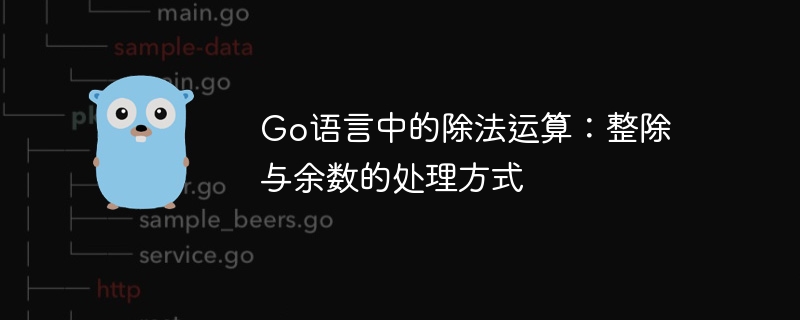Home >Backend Development >Golang >Division operation in Go language: How to handle integer division and remainder
Division operation in Go language: How to handle integer division and remainder
- WBOYWBOYWBOYWBOYWBOYWBOYWBOYWBOYWBOYWBOYWBOYWBOYWBOriginal
- 2024-03-23 09:18:04508browse

Title: Division operation in Go language: How to handle integer divisions and remainders
Go language is a modern programming language that supports a variety of mathematical operations. The division operation is one that is often used when writing programs. In the Go language, division operations are divided into two processing methods: integer division and remainder. Programmers can choose the appropriate method for calculation according to their needs. This article will introduce the division operation in Go language in detail and provide specific code examples to help readers better understand.
Integer division operation
In the Go language, the integer division operation is performed using the / symbol, that is, the result obtained by dividing two integers is the integer part. Integer division operations discard the decimal part and only retain the integer part as the final result. The following is a code example of an integer division operation:
package main
import "fmt"
func main() {
a := 10
b := 3
result := a / b
fmt.Println("整除运算结果:", result) // 输出:整除运算结果:3
}In the above example, 10 is divided by 3 for integer division operation, and the result is 3, that is, only the integer part is retained.
Remainder operation
In addition to integer division operations, the Go language also supports remainder operations, which are performed through the % symbol. The result of the remainder operation is the remainder after dividing two integers. The following is a code example of remainder operation:
package main
import "fmt"
func main() {
a := 10
b := 3
remainder := a % b
fmt.Println("余数运算结果:", remainder) // 输出:余数运算结果:1
}In the above example, 10 is divided by 3 for remainder operation, and the result is 1, that is, the remainder of 10 divided by 3 is 1.
Conclusion
This article introduces the integer division and remainder operations in the Go language, and provides specific code examples to help readers better understand. When programmers write programs, they can choose the appropriate division operation method according to actual needs to meet different calculation requirements. I hope that readers will have a deeper understanding of division operations in Go language through the introduction of this article.
The above is the detailed content of Division operation in Go language: How to handle integer division and remainder. For more information, please follow other related articles on the PHP Chinese website!

